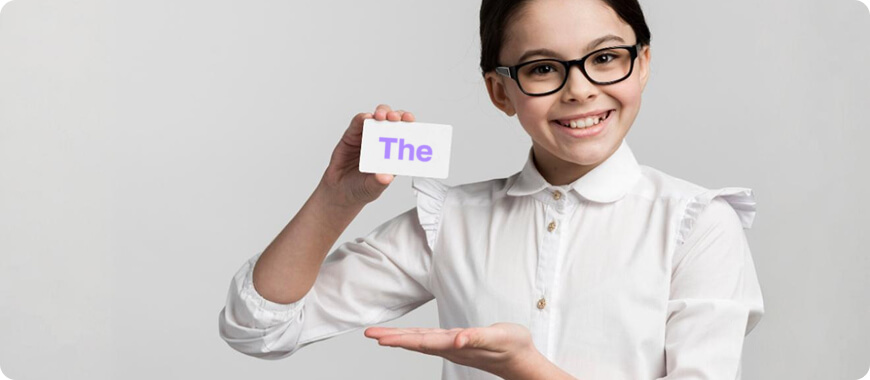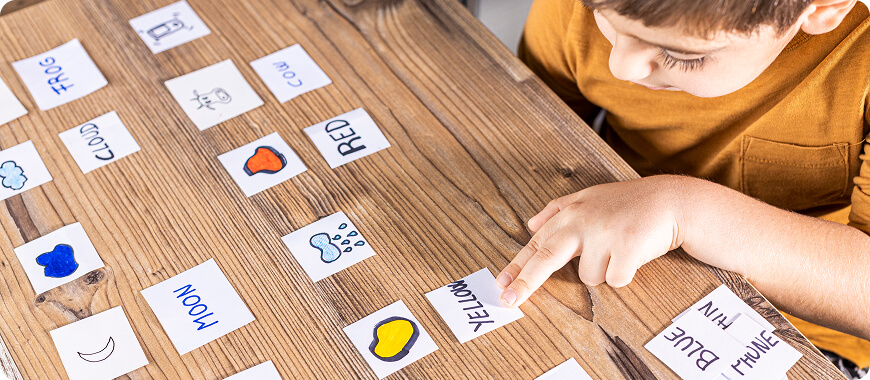If your child says “I want a apple”, “She goes to the school every day”, or “He is an university student”, you know how confusing English articles can be.
The tiny words a, an, and the — known as articles in English — are among the most frequently used, yet most misunderstood parts of grammar for young learners. And for parents who didn’t grow up with English, explaining when to use a, an or the can feel like trying to describe the colour blue to someone who’s never seen it.
At Learnlink, we’ve spent years helping children aged 5–12 master definite and indefinite articles — not through memorisation, but through stories, games, and real conversation with qualified English teachers. In this guide, we’ll break down the differences between a, an, the using simple rules, clear examples, and fun practice ideas you can use at home.
Let’s make a, an, the finally make sense — for both you and your child.
Why Are English Articles So Tricky for Kids?
Unlike many languages, English uses articles — and they don’t always follow predictable rules. That’s why children (and even adults) get stuck on questions like:
- Why do we say “an hour” but “a house”?
- When do we use “the” — and when should there be no article at all?
- Why is it “I go to school” but “I’m at the school”?
The challenge isn’t the child — it’s the teaching. Most grammar guides use abstract explanations that don’t stick. But when children see, hear, and play with language, they understand — and remember.
That’s how we teach at Learnlink: no boring drills, just natural, joyful learning. And once kids understand how to use a, an, the, their speaking and writing improve dramatically.
Meet the Articles: 'a', 'an' and 'the' – What Do They Mean?
Articles are small words that go before nouns to tell us whether we’re talking about something specific or general.
There are three articles in English:
- a and an → indefinite articles (not specific)
- the → definite article (specific)
Let’s meet them.
'A' – The Any-One Hero
We use a when we mean one of many — not a particular one.
- “I want a banana.” (Any banana will do.)
- “She has a red bike.” (Not a specific one — just one like that.)
Use a before words that start with a consonant sound:
- a cat
- a dog
- a university (sounds like yoo-ni-ver-si-ty)
- a one-time offer (starts with /w/ — a consonant sound)
💬 Tip for parents: It’s about sound, not spelling.
'An' – The Vowel Friend
An does the same job as a — but it’s used before words that start with a vowel sound.
- “He has an apple.”
- “It’s an interesting book.”
- “She is an hour late.” (Even though the hour starts with ‘h’, the ‘h’ is silent — it sounds like our.)
Never say “a apple” — it’s always an apple.
Rule: Use an before words that start with a vowel sound, even if the spelling starts with a consonant:
- an umbrella
- an MP3 player (sounds like em)
- an honest person (silent ‘h’)
- an MBA (starts with /em/)
'The' – The Specific Star
We use the when we mean one particular thing — something specific that both the speaker and listener know about.
- “Pass me the book.” (We both see it.)
- “We saw the cat again.” (The one we saw yesterday.)
- “Turn on the TV.” (Our TV — it’s clear which one.)
“The” is the definite article because it points to something definite.
Use the when:
- It’s been mentioned before
- There’s only one (the sun, the moon)
- It’s clear from context (the door, the teacher)
Simple Rules for Using 'a', 'an' and 'the'
Here are three simple, practical rules your child can actually remember.
Rule 1: Use 'a' or 'an' with something new or general
When you mention a noun for the first time, or when it’s one of many, use a or an.
- “I saw a dog in the garden.” (First mention — any dog.)
- “She wants an ice cream.” (Not a specific one — just one like that.)
Once it’s mentioned, you can switch to the:
- “The dog was barking.” (Now we know which one.)
This shows how articles are used to give more information as a conversation goes on.
Rule 2: Use 'the' when we both know what we’re talking about
Use the when the noun is specific — because of context, sight, or previous mention.
- “Where’s the homework?” (We both know which homework.)
- “Look at the moon!” (There’s only one — it’s clear.)
- “I love the dress you wore yesterday.” (Specific one.)
Tip: If you can replace the with this or that, it’s probably correct.
Rule 3: 'An' goes before vowel sounds, not just letters
This is the most common mistake — and the easiest to fix.
It’s not about the letter, it’s about the sound.

Remember: The indefinite article is used before singular nouns that start with a vowel sound, not just a vowel letter.
When NOT to Use Articles – Quick Tips
Even native speakers skip articles in certain cases. Teach your child these common exceptions early.
- No article with general plurals or uncountable nouns
- When talking about things in general, we often use no article at all.

Use no article with:
- General plurals: dogs, books, games
- Uncountable nouns: water, rice, music
- Activities: swimming, reading, school
- No article with names of cities, countries, or meals

Exceptions: Some country names do use the:
- the United States
- the Netherlands
- the Philippines
- the UK
Also: the + names of rivers, seas, oceans:
- the Thames
- the Mediterranean
- the Pacific
Spot the Mistake! Fun Practice for Kids
Learning should be fun — especially grammar. Try these quick games at home.
Game 1: “A, An or The?” Card Match
- Print out picture cards (apple, dog, moon, car, book).
- Ask your child: “Which article do we use?”
- Let them place the correct article card beside it.
Bonus: Add tricky ones like hour, university, elephant.
Game 2: “Fix the Sentence!”
Read out silly sentences with mistakes — let your child correct them.
- ❌ “I want a apple.” → ✅ “I want an apple.”
- ❌ “We went to the Paris.” → ✅ “We went to Paris.”
- ❌ “She is reading the book.” (if it’s the first mention) → ✅ “She is reading a book.”
- ❌ “He is an university student.” → ✅ “He is a university student.”
Kids love catching “grown-up mistakes” — it builds confidence fast.
Real-Life Examples Kids Can Understand
Use everyday moments to practise:
- “Can I have a cookie?” (Any one.)
- “Pass me the blue pencil.” (Not the red one — I mean that one.)
- “He is an artist.” (His job — general.)
- “Look at the stars!” (We can see them — specific.)
- “I go to school every day.” (General activity — no article)
- “I left my bag at the school.” (Specific building — use the)
When your child hears native speakers say these phrases correctly — it sticks.
Free Printable Worksheets – Practice at Home!
Want to reinforce what your child has learned?
We’ve created free printable worksheets focused on articles in English — designed by our teachers and tested with real children.
Ready to Master English Articles? Try a Free Lesson with Learnlink!
If your child still hesitates between a, an, and the — it might be time to learn with a qualified English teacher in a fun, stress-free way.
At Learnlink, our online English school for kids, we turn confusing grammar into engaging, interactive lessons.
Your first lesson is completely free.
Final Word
The differences between a, an, the may seem small — but they’re essential for speaking English clearly and confidently.
At Learnlink, we don’t just teach rules — we help children use them naturally, through speaking, stories, and play.
Because when grammar feels like fun, children don’t just learn — they love it.
Ready to make articles easy?
Let’s help your child speak like a native — one little word at a time











